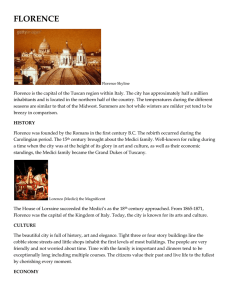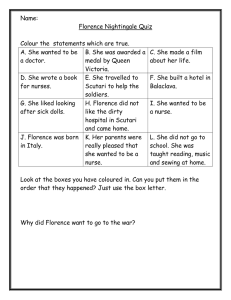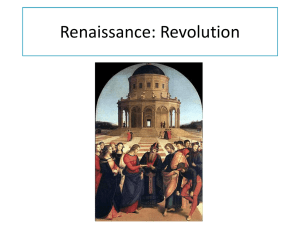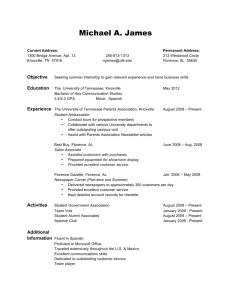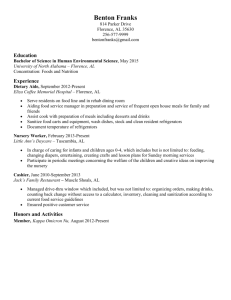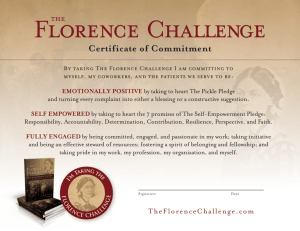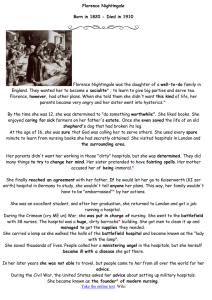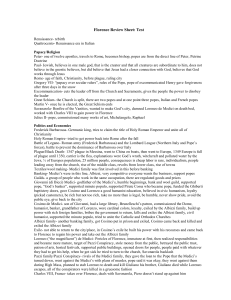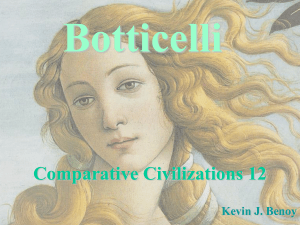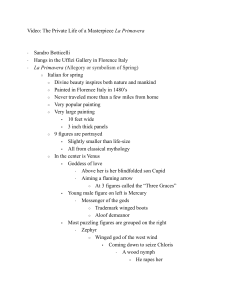Introduction to Classical Humanism
advertisement
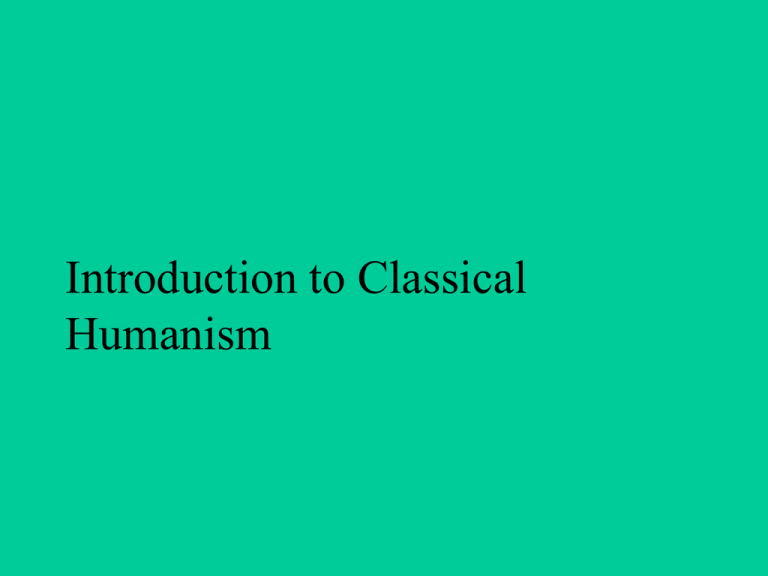
Introduction to Classical Humanism Cimabue 1280 Veneziano 1445 The Madonna and Child with Saints 1445 Appropriation of Greek and Latin classics • Worth and dignity of individual • New program of study: grammar, logic, rhetoric, arithmetic, geometry, astronomy, and music. Focus on secular, not sacred (although never do they exclude Catholic faith) • Life on earth no longer a vale of tears but an opportunity for talent and ability Uffizi Gallery World View from Classicism • This-world view rather that St. Augustine’s focus on City of God • Civic responsibility (Cicero and Aristotle) was hallmark of cultivated individual • Studiolo: manuscripts, musical instruments, and artifacts of scientific inquiry El Duomo Florence, Italy Italy: Birthplace of Renaissance (1300-1600) • • • • Trade Least feudalized Profit from Crusades Florence shopkeepers introduced double-entry bookkeeping • Pursuit of money and leisure Climate of anticlericalism and intellectual skepticism • Avignon Papacy and Great Schism • Middle class • Medici family in Florence supported scholarship and patronized the arts Artists supported by Medici Family • • • • Brunelleschi Botticelli Verrocchio Michelangelo On Botticelli • “This beautiful female form, with its diaphanous shapes and pure outlines, constitutes a rejection or a sublimation of its physical aspects. It is like a challenge on the part of the intellect—a challenge thrown in the face of sensuality.” Argan • “…Matter is transfigured into intellect…” • Petrarch: Father of Humanism • Devoted life to recovery, copying, and editing of Latin manuscripts • Tireless popularizer of classical studies • Epistolary tradition revived: he used letters to describe admiration for antiquity • Passion for antiquity and eagerness to rescue it from neglect • Motivated the printing press within 100 years of his death) Ficino’s Platonic Academy in Florence (c. 1475) • Love is exalted as a divine force • Platonic (spiritual) love attracted the soul to God • Such love is inspired by physical beauty Pico della Mirandola • Efforts to recover the past and reverence for the power of human knowledge • Typified individualism • Affirms perfectibility of the individual • Rational person at the center of a rational universe To Pico, man was created by the “Divine Artificer.”: – His answer to the need for a creature who “might comprehend the – meaning of so vast an achievement [as the creation of the world], – [and] might be moved with love at its beauty and smitten with – awe at its grandeur.”
